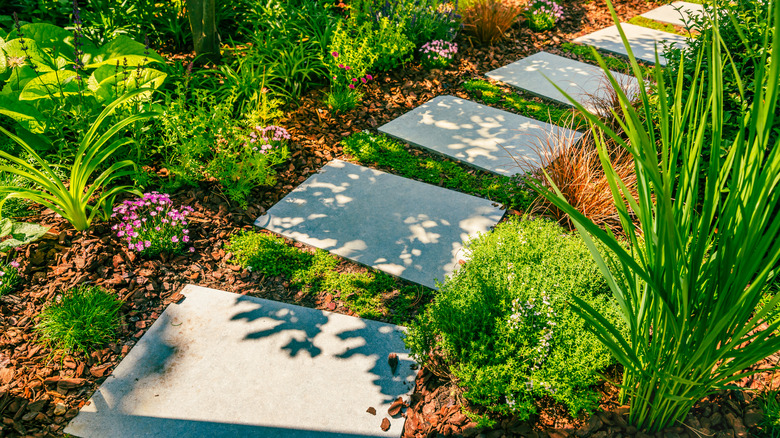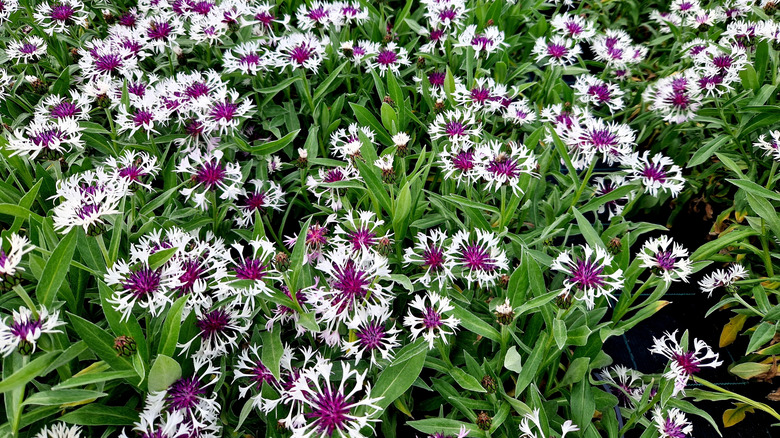The Unexpected Flowering Perennial That Can Also Make A Great Ground Cover
If you're on the lookout for a new ground cover to add to your recently established flower beds and you want something a little different, why not think about using low-growing perennials that like to form nice, dense clumps? While you might consider flowering perennials as fairly upright plants that work perfectly in garden beds, cottage gardens, or wildflower meadows, there's one unexpected flowering perennial that you could also use as a great ground cover. Centaurea montana 'Amethyst in Snow' is a low-growing plant that only reaches a maximum height of around 14 inches, and forms a relatively dense mat.
It multiplies itself via above-ground stolons, allowing it to spread and even become naturalized in its growing environment. What you'll love about this very attractive plant is that it has lovely, bright green leaves that are arranged alternately on upright green stems. At the tips of these stems, pretty cornflowers emerge with snow-white petals and purple centers. It's quite a hardy plant and can be grown in USDA zones 3 through 9. This little beauty will bloom from spring into early summer, and if you deadhead the spent flowers, you'll get even more blooms right into the fall. What's even better is that this perennial is deer-resistant, and you can even cut the flowers for a gorgeous display indoors. Although a cousin species (Centaurea cyanus) is a beautiful blue cornflower variety you'll regret planting in your garden because it's regarded as invasive, 'Amethyst in Snow' is not an invasive plant.
How to grow 'Amethyst in Snow' as a stunning ground cover
This easy-to-grow perennial is virtually maintenance-free and doesn't demand too much of your attention, except to admire those magnificent flowers and enjoy the wildlife activity because you'll attract pollinators to your garden with this unique spring perennial. To ensure good coverage over your garden beds, space the plants around 18 inches apart. Each plant should spread to a width of around 24 inches. A sunny position is best, and this plant is not fussy about the type of soil, as long as it's well-drained.
After 'Amethyst in Snow' has become fully established, it's drought-tolerant and won't need any additional fertilizing. In fact, if you're growing this as a ground cover, you want to avoid feeding it, as too much nutrition will cause the plant to become leggy, and that's not what you want. In its first year, you should keep it hydrated to allow it to establish a robust root system. Once the plant has finished flowering for the season, you can just cut back the green stems in the fall, and this should initiate plenty of new growth. The only other thing you might want to do is divide the clumps after around two to three years to rejuvenate and prevent overcrowding. This just means that you'll have additional plants to put elsewhere in your garden. For even more inspiration to liven up your garden, you might like to take a look at some other outstanding ground covers for flower beds.

